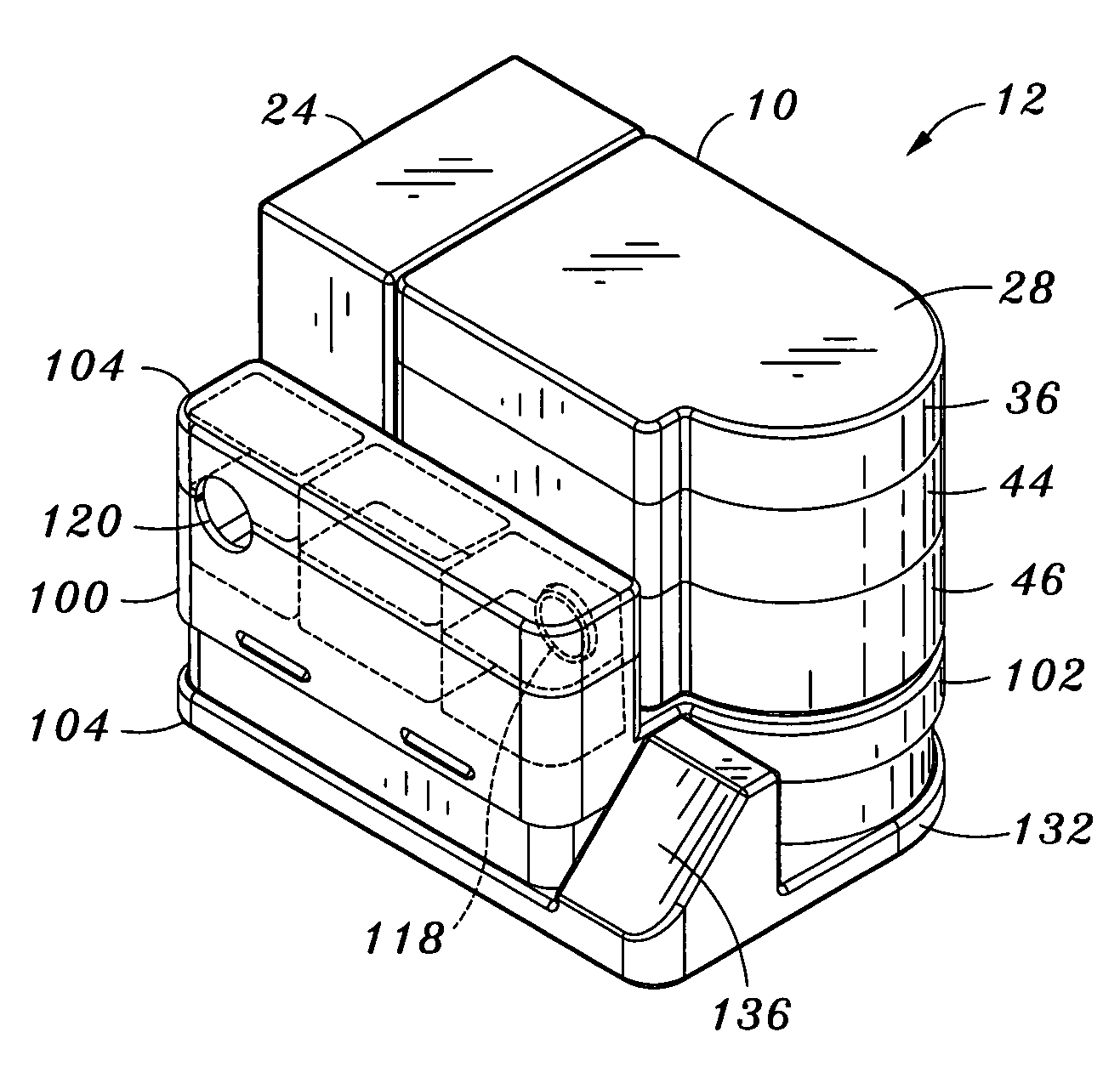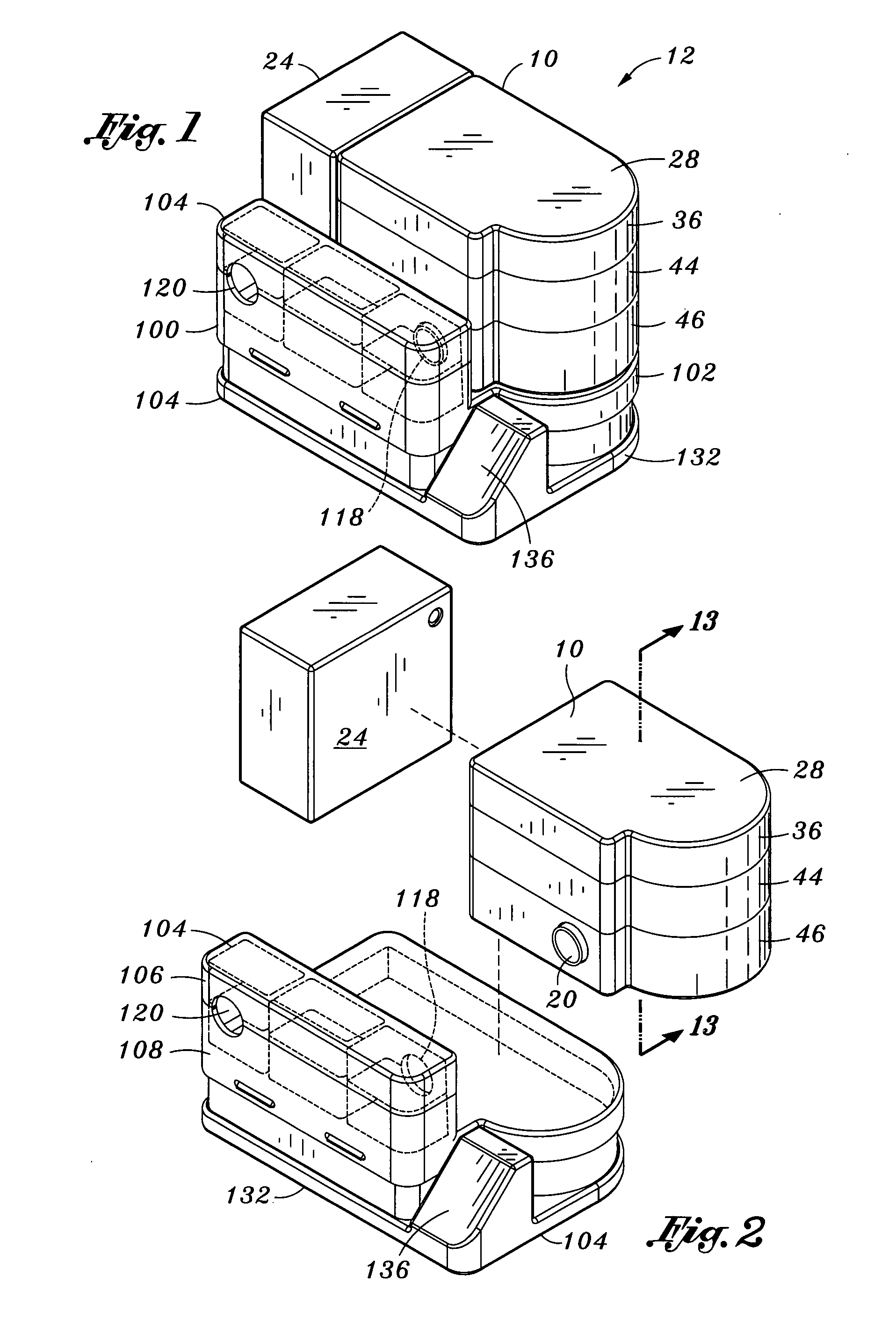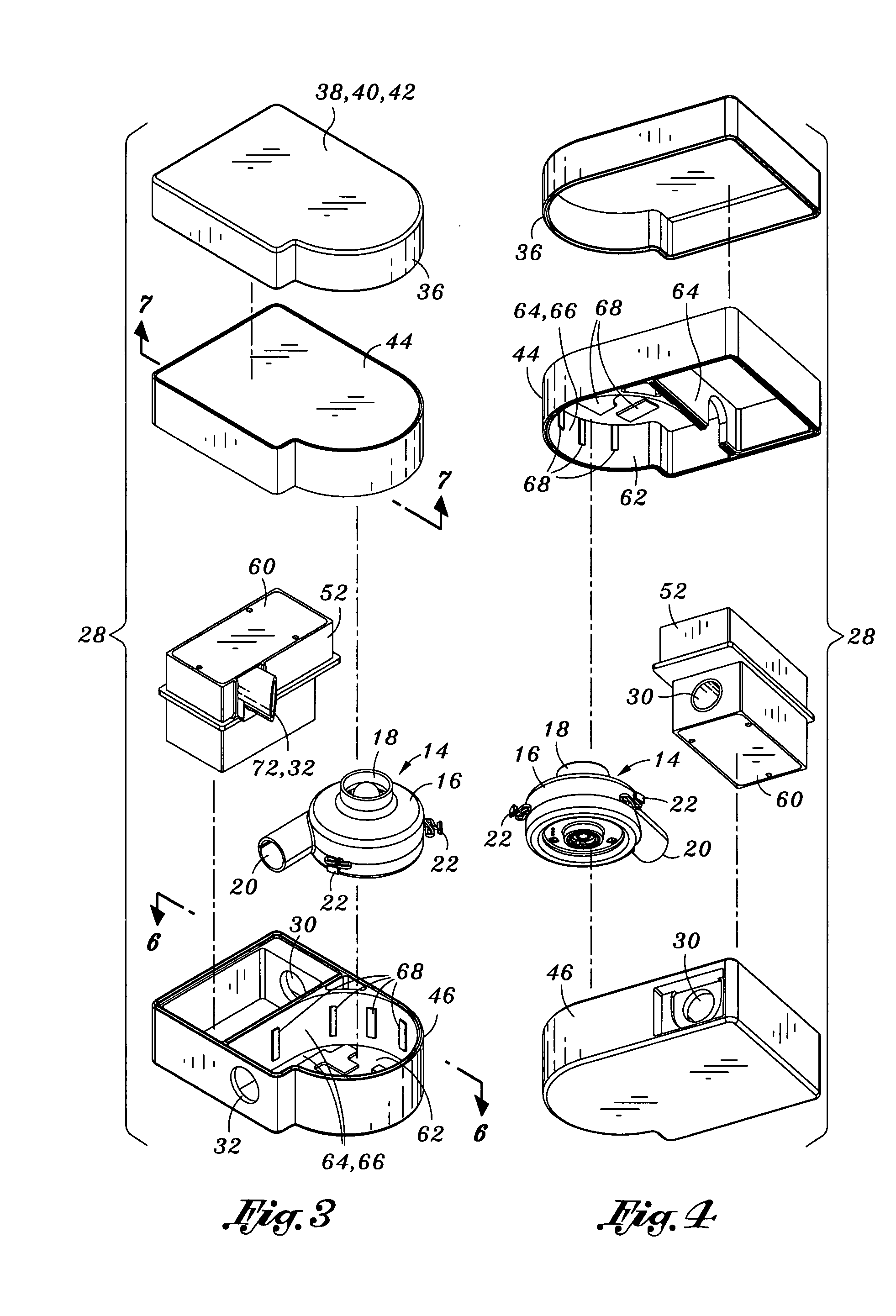Acoustic attenuation chamber
a technology of attenuation chamber and acoustic energy, which is applied in the field of passive silencer, can solve the problems of increasing resonator loss, and achieve the effects of reducing the velocity of flow passing, reducing noise of air movement, and increasing broadband attenuation of acoustic energy
- Summary
- Abstract
- Description
- Claims
- Application Information
AI Technical Summary
Benefits of technology
Problems solved by technology
Method used
Image
Examples
Embodiment Construction
[0045]Referring now to the drawings wherein the showings are for purposes of illustrating preferred embodiments of the present invention and not for purposes of limiting the same, shown is a passive silencer 10 adapted for use with a blower device 12. In one embodiment, the blower device 12 is configured as a continuous positive airway pressure (CPAP) device although the passive silencer 10 may be used in a variety of other ventilation systems. Exemplary uses of the passive silencer 10 include a bedside or tabletop-mounted blower device as disclosed in commonly-owned U.S. Pat. No. 7,195,014 entitled “Portable Continuous Positive Airway Pressure System”, the entire contents of which is incorporated by reference herein. However, the passive silencer 10 may also be used in portable or wearable versions of the CPAP device.
[0046]The passive silencer 10 may be implemented in several embodiments of which two are illustrated in FIGS. 1-23. More specifically, FIGS. 1-14 illustrate the integr...
PUM
 Login to View More
Login to View More Abstract
Description
Claims
Application Information
 Login to View More
Login to View More - R&D
- Intellectual Property
- Life Sciences
- Materials
- Tech Scout
- Unparalleled Data Quality
- Higher Quality Content
- 60% Fewer Hallucinations
Browse by: Latest US Patents, China's latest patents, Technical Efficacy Thesaurus, Application Domain, Technology Topic, Popular Technical Reports.
© 2025 PatSnap. All rights reserved.Legal|Privacy policy|Modern Slavery Act Transparency Statement|Sitemap|About US| Contact US: help@patsnap.com



